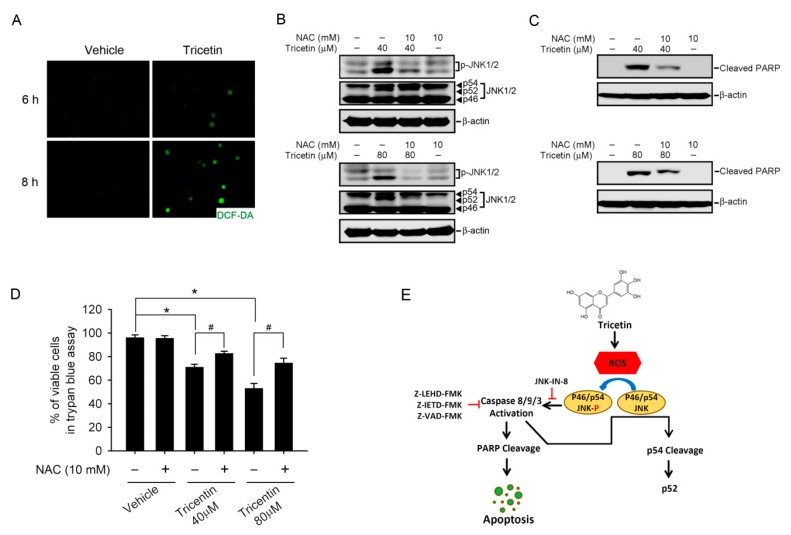Figure 5.
Tricetin-induced intracellular oxidative stress as an initial signal for c-Jun N-terminal kinase (JNK)-mediated apoptosis in HL-60 cells. (A) HL-60 cells were treated with 80 μM tricetin for the indicated time, and then the total reactive oxygen species (ROS) level was measured by H2DCF-DA staining under a fluorescence microscope. Original magnification, 200×; (B,C) HL-60 cells were pretreated with or without 10 mM N-acetylcysteine (NAC) for 1 h followed by treatment with 40 or 80 μM tricetin for 8 h; levels of JNK1/2, p-JNK1/2, cleaved poly(ADP ribose) polymerase (PARP), and β-actin were detected by a Western blot analysis; (D) HL-60 cells were pretreated with or without 10 mM NAC for 1 h followed by treatment with 40 or 80 μM tricetin for 12 h Trypan blue exclusion assay was used to quantify the cell viability change in each group. Values represent the mean ± SE of three independent experiments. * p < 0.05, control vs. tricetin; # p < 0.05, tricetin vs. NAC plus tricetin; (E) Proposed signal transduction pathways by which tricetin induces apoptosis of acute myeloid leukemias (AML) cells. The antileukemic activity of tricetin was attributed to its apoptosis induction by increasing ROS production and further inducing activation of JNK and caspases-8, -9, and -3. The p54 JNK cleavage was also induced by tricetin-mediated ROS upregulation. Black arrows indicate induced effects and red t-bar indicate inhibitory effects.

